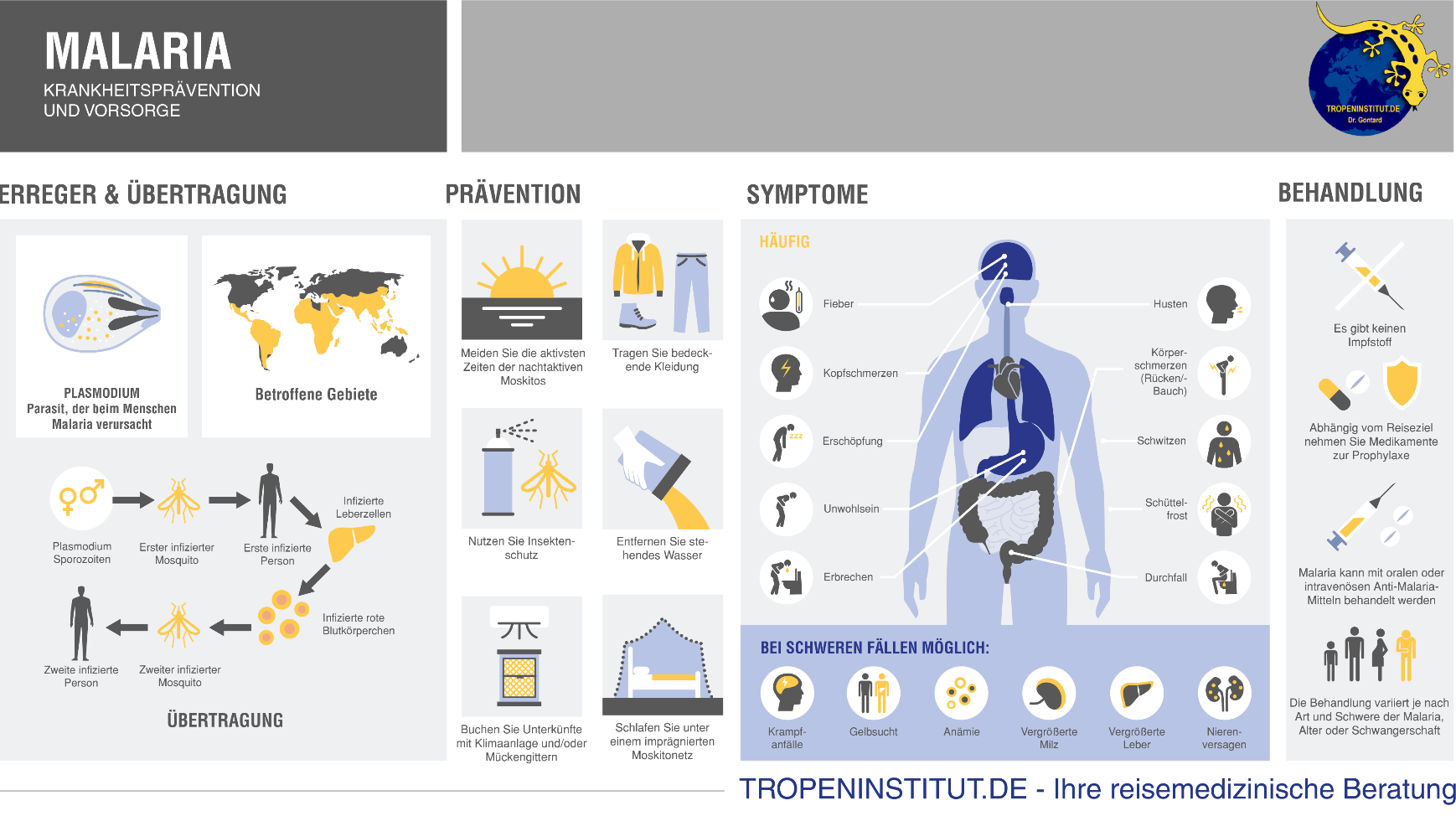Overview
Malaria is an infectious disease that occurs in more than 100 countries worldwide - especially in the tropics and subtropics. It affects people living in these regions and more than 125 million visitors to these countries worldwide.
also see What is malaria? and Where is malaria found?
Symptoms
The malaria parasite is transmitted to humans by the Anopheles mosquito (transmission of malaria). Malaria then causes flu-like symptoms such as fever, aching limbs and headaches, a general feeling of illness and rarely diarrhea and vomiting.
See also Malaria symptoms
Three types of malaria
Parasites of the species Plasmodium:
A. Malaria tropica (Plasmodium falciparum)
B. Malaria tertiana (Plasmodium vivax und ovale)
C. Malaria quartana (Plasmodium malariae)
Malaria tropica (A) is particularly well known and feared as it can cause severe organ complications and can lead to death without appropriate treatment. Malaria tertiana (B) and Malaria quartana (C) are usually milder and last for a longer period of time. Malaria tertiana can also be severe or even life-threatening in people with an already weakened immune system.
Treatment
Malaria is treated with medication. Depending on the state of health, the type of malaria and the resistance of the plasmodia, the corresponding active ingredients are selected here. Some of the drugs can also be used to prevent malaria.
Infografic
.

Download malaria infografic
Find more information about malaria on the following pages: